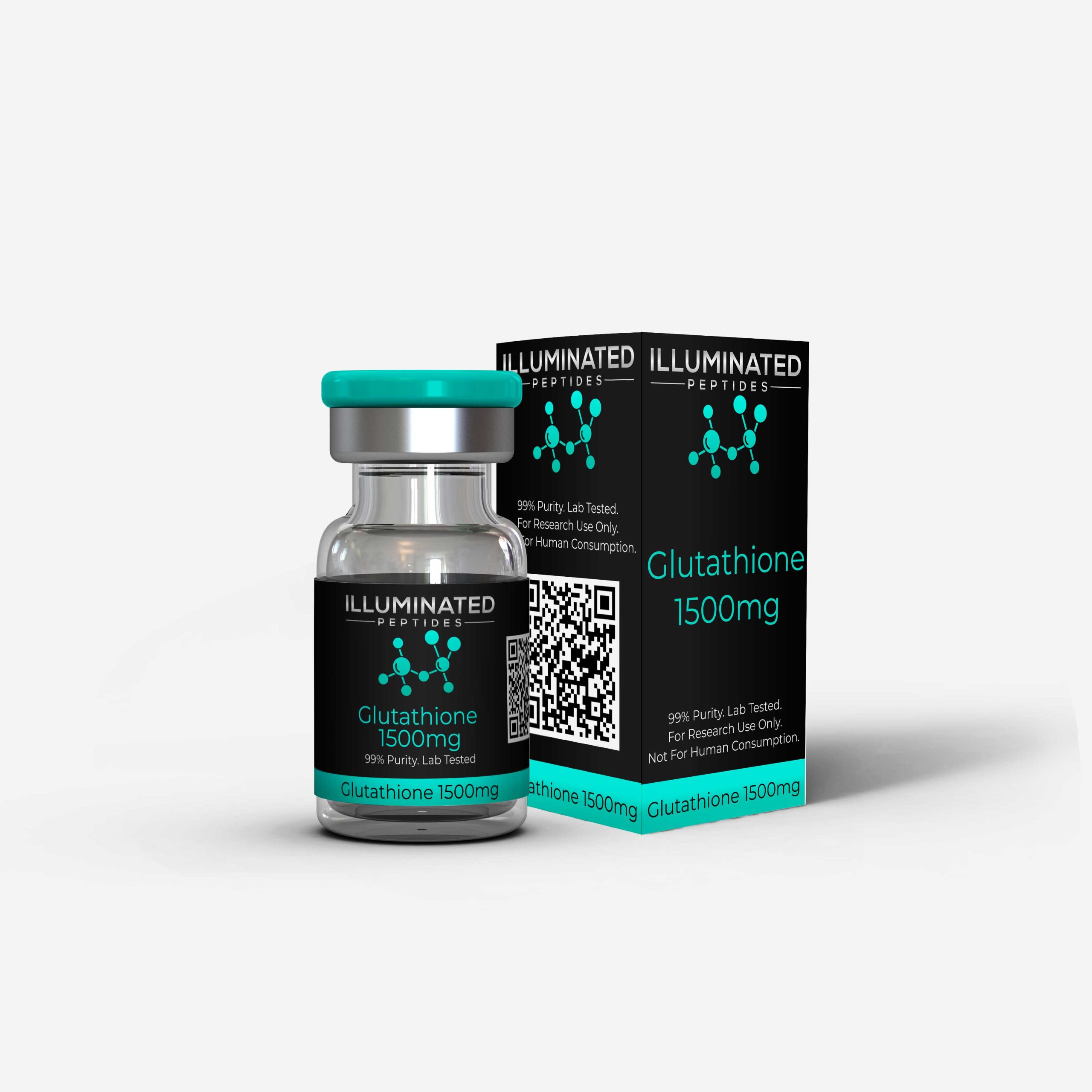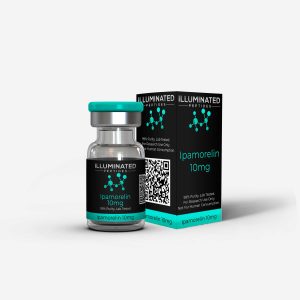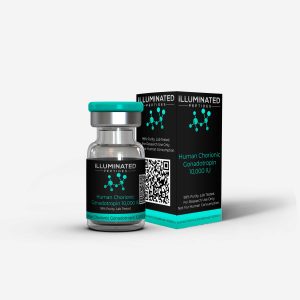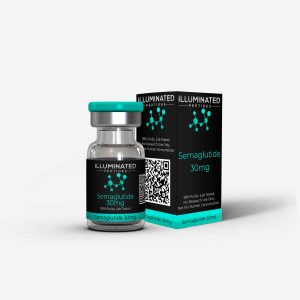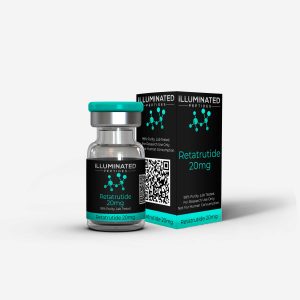Description
Glutathione
Glutathione is a short peptide composed of cysteine, glutamate, and glycine. It occurs naturally throughout the body and acts primarily as an antioxidant and as a supportive agent to a number of processes in the central nervous system. Glutathione is especially important in the detoxification processes of the liver and as a free-radical scavenger in the brain. There is ample evidence to suggest that loss of glutathione can contribute to neurodegenerative diseases like Parkinson’s disease as well as diseases of the eye like cataracts and diabetic retinopathy. Reduced glutathione levels are thought to be both a consequence of aging as well as a contributor to the aging process. Chronic disease also reduces glutathione levels.
Oral glutathione supplementation appears to be ineffective due to the breakdown of the peptide in the gastrointestinal system. Though much is made of oral supplementation with glutathione precursors like N-acetyl cysteine (NAC), research shows that glutathione levels tend to decrease with age due to a loss of production capacity, usually starting around middle age. This loss of production capacity, of course, limits the effectiveness of NAC and other precursors to generate glutathione. The best evidence indicates that glutathione is most effective when injected or inhaled via nasal preparations.
Glutathione Structure
Molecular Formula: C10H17N3O6S
Molecular Weight: 307.33 g/mol
PubChem CID: 124886
CAS No: 70-18-8
Alternative Names: Glutathione, Isethion, GSH
Glutathione is an Antioxidant
Glutathione is recognized as one of the most important low-molecular-weight antioxidants made by the body’s cells. By virtue of the sulfur contained in the cysteine component of GSH, it can remove harmful toxins from the body, such as peroxides, nitrogen dioxide, and others, through a basic redox reaction. This process protects cells, DNA, and extracellular matrix components from damage caused by free radicals. Glutathione not only neutralizes free radicals directly, but also helps other antioxidants, such as vitamins C and E, in their roles as antioxidants.
Glutathione is found both inside cells and as a secreted substance in the extracellular matrix. It is synthesized in humans in a simple redox reaction involving ATP and two enzymes. The process begins with glutamate and cysteine combining to form $\gamma$-glutamyl-cysteine, which then joins with glycine to form glutathione.
Glutathione is so important that its deficiency has been linked with a wide range of diseases such as diabetes, HIV, cancer, and even tuberculosis. Research suggests that high glutathione levels may be an important marker of disease severity and prognosis. Measuring glutathione may offer clinicians a more quantitative means of assessing a person’s health and determining the effectiveness and timing of various treatments. Despite the understanding of glutathione’s role in aging and disease, there are no routine methods for measuring it. Researchers are working on how measuring this simple peptide could provide new insights into diseases and their treatment. In the future, measuring glutathione levels may become as common and useful as measuring things like blood pressure, cholesterol, and blood sugar levels.
Glutathione’s Biological Roles
While glutathione is best known for its antioxidant functions, the peptide plays many other roles in the human body. It is required for the production of leukotrienes (inflammatory mediators) and prostaglandins. This makes it a powerful regulator of certain immune responses as well as a potent anti-inflammatory agent. It also acts as a cofactor in a number of biochemical reactions and enhances the function of citrulline in the nitric oxide cycle. In other words, glutathione is a key component of cellular metabolism and is particularly important in regulating blood pressure and cardiac health.
Glutathione is also critical for proper protein folding in the endoplasmic reticulum. Research shows that glutathione helps proteins to fold into the correct 3D shape so they can bind to receptors and function normally. It is particularly important in the formation of disulfide bonds. Although it is not the only mechanism that allows cells to achieve proper protein folding, glutathione is an important part of this cellular function and contributes heavily to the proper working of cells.
There is currently some debate as to whether glutathione acts as a neurotransmitter. It can modulate the redox states of things like the NMDA receptor (a function that would make it a neuromodulator). It also appears to activate ionotropic receptors on Müller cells found in the retina, where they maintain the structure and function of retinal cells. This indicates that even if glutathione is not a neurotransmitter, it may still serve as a retinal neuromodulator.
Glutathione plays a vital role in protecting the body from oxidative stress, which contributes to tissue damage, reduced performance, and faster aging. As we grow older, natural glutathione levels gradually decline, leaving the body more vulnerable to imbalances that affect overall health and resilience.
A Note on Glutathione Administration
Dietary sources and oral intake of glutathione are generally not effective because the compound tends to break down before it can be absorbed. Certain nutrients such as curcumin, N-acetyl cysteine, and compounds found in vegetables may provide some support by encouraging the body’s own production of glutathione. However, the overall increase is usually modest. Research suggests that more reliable ways to raise glutathione levels include direct delivery methods such as injections or inhalation, which bypass the limitations of digestion.
Glutathione and Aging
Oxidative stress is a major factor in cellular aging, DNA damage, hormonal changes, and metabolic decline. Because glutathione defends against these processes, maintaining healthy levels can support the body in slowing age-related changes. With advancing age, the ability to naturally synthesize glutathione decreases, which makes supplementation important. Among the available options, studies indicate that injectable or inhaled forms of glutathione are the most effective ways to restore levels and support healthy aging.
Research on animal models has shown that a decline in glutathione is closely tied to rising levels of free radicals. This relationship highlights the role of oxidative stress in age-related conditions. Studies suggest that when glutathione levels begin to decrease in midlife, a delayed but significant increase in free radical activity follows. A similar trend has been observed in humans, where levels typically begin to fall between the ages of 30 and 40, and within a decade, oxidative stress becomes more apparent. This pattern helps explain why many aging processes appear to accelerate after midlife.
Glutathione and Cancer
Glutathione plays a complicated role in cancer. On one hand, it is protective because it supports the body in eliminating harmful compounds before they can damage cells. For example, it helps neutralize carcinogens in the lungs, where exposure to toxins such as cigarette smoke can rapidly deplete glutathione. Supplementation in such cases may help the body defend itself against long-term damage.
On the other hand, glutathione can also protect abnormal cells, making some forms of treatment less effective. This dual role makes its relationship with cancer both beneficial and challenging. While maintaining adequate levels appears important in prevention, its role during therapy is more complex and requires further study
Once cancer is established, glutathione may contribute to tumor growth by protecting abnormal cells from the body’s own defense mechanisms. This illustrates how its function can vary depending on the situation. Researchers continue to study how glutathione can be managed to support better health outcomes. What remains clear is that maintaining overall wellness and reducing exposure to harmful substances allows the natural protective role of glutathione to be most effective.
Glutathione in Brain Health
Reduced glutathione is linked not only with normal signs of aging but also with neurological conditions. In particular, it plays an important role in processes related to neurodegenerative disorders. One pathway involves iron-dependent cell damage, which can proceed unchecked when glutathione is deficient, leading to accelerated decline in the nervous system. Research suggests that supporting healthy levels of glutathione, either directly or through precursors such as N-acetyl cysteine, can be especially valuable in protecting brain function and delaying age-related changes.
Glutathione levels naturally decline with age, but the reduction is most pronounced in the brain. This makes the nervous system more vulnerable to degenerative changes and injury. Conditions such as Parkinson’s disease and damage after stroke have been linked to low levels of this antioxidant.
This decline is especially important during times of stress. Normally, the body responds to mild stress by increasing glutathione production to protect against further harm. However, with aging, the ability to produce enough glutathione is reduced, leaving neurons more exposed to damage. While some precursors provide partial support, research indicates that direct delivery of glutathione remains the most reliable way to restore levels and help guard the brain against stress-related decline.
Glutathione and the Eye
Glutathione plays a vital role in maintaining eye health because the lens and retina are highly sensitive to oxidative stress. The constant exposure of the eyes to light and oxygen makes them especially vulnerable to free radical damage, which can contribute to vision problems over time. By neutralizing these harmful compounds, glutathione helps protect delicate ocular tissues and preserve clarity of vision.
As we age, natural glutathione levels in the eye decline, which is thought to contribute to common conditions such as cataracts and age-related vision loss. The lens, in particular, relies heavily on antioxidants like glutathione to keep proteins stable and transparent. When these protective systems weaken, the proteins may clump together, leading to clouding of the lens and impaired vision.
Research indicates that supporting glutathione levels may help delay or reduce age-related damage in the eyes. This makes maintaining adequate glutathione especially important for long-term eye health, particularly in older adults. Although direct supplementation methods show the most promise, ensuring general antioxidant balance in the body also plays a supportive role.
Glutathione and Cartilage Health
Cartilage, the tissue that cushions joints, is especially prone to oxidative stress because it does not receive a strong blood supply. Once damaged, cartilage heals poorly, which makes protecting it from long-term wear and tear essential. Glutathione helps by neutralizing free radicals that can degrade joint tissue, thereby supporting mobility and joint comfort.
Declining glutathione levels with age contribute to greater stress on cartilage, which may accelerate conditions such as arthritis. Inflammation also increases oxidative damage in the joints, further depleting glutathione reserves. Without sufficient antioxidant protection, cartilage breakdown occurs more rapidly, leading to stiffness and discomfort.
Research suggests that maintaining healthy glutathione levels may slow this process and support joint resilience. By strengthening the body’s ability to handle oxidative stress, glutathione provides a protective buffer that helps preserve cartilage integrity. This makes it a key player in maintaining joint health across the lifespan.
Glutathione and Skin
The skin is the body’s largest organ and constantly exposed to environmental stressors such as pollution, sunlight, and toxins. Glutathione plays a protective role by reducing oxidative damage in skin cells, helping to maintain elasticity, clarity, and overall health. This antioxidant action supports the skin’s natural barrier function and slows visible signs of aging.
As glutathione levels decline with age, the skin becomes more vulnerable to issues such as dullness, fine lines, and uneven tone. Sun exposure, in particular, increases free radical activity in the skin, overwhelming its natural defenses and leading to premature aging. Glutathione helps counter these effects by neutralizing harmful molecules before they can damage skin cells.
Supporting glutathione levels has also been linked to brighter and healthier-looking skin. While lifestyle habits such as proper nutrition and sun protection remain important, maintaining adequate antioxidant levels enhances the skin’s ability to repair itself and resist environmental stress.
Glutathione and the Immune System
The immune system relies heavily on glutathione to function effectively. As a master antioxidant, it supports the activity of white blood cells, which defend the body against infections. By maintaining the proper balance of oxidation and reduction within cells, glutathione ensures that immune responses are strong but not overly aggressive.
Low glutathione levels weaken immune defenses and increase vulnerability to illness. This decline is especially noticeable with age, when the immune system naturally loses some of its strength. Without enough glutathione, immune cells may struggle to perform their protective roles, leaving the body more susceptible to infections and slower recovery.
Research shows that supporting glutathione levels can enhance immune function, making the body more resilient against everyday challenges. By boosting the antioxidant capacity of immune cells, glutathione helps maintain balance, reduce chronic inflammation, and keep the immune system functioning at its best.
Glutathione Summary
Glutathione is one of the body’s most important antioxidants, working at the cellular level to protect against damage and maintain balance. Its influence spans multiple systems, including the brain, eyes, skin, cartilage, and immune system, highlighting its role in overall health and aging. By defending against oxidative stress, glutathione helps slow many of the processes that lead to decline over time.

